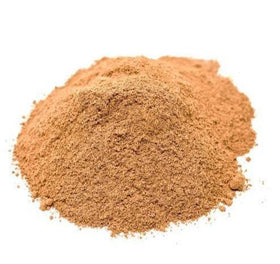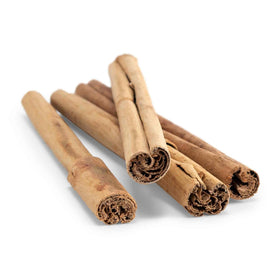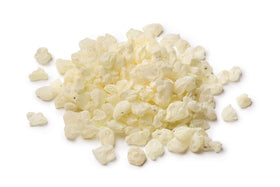Ceylon Cinnamon: Its Flavor and Why It Differs from Common Cinnamon
Why Ceylon Cinnamon Smells and Tastes Different than Other Cinnamon Varieties
Cinnamon is a beloved spice that has found its way into a variety of culinary delights, from baked goods to savory dishes. However, not all cinnamon is created equal. Did you know there are actually several varieties of cinnamon? The type we will focus on, Ceylon cinnamon, particularly, stands out for its distinct taste and qualities.
Ceylon cinnamon, also known as "true cinnamon," comes from the Cinnamomum verum tree. This tree is native to Sri Lanka and parts of Southern India and is part of the Lauraceae family. In this article, we'll address the intriguing reasons why Ceylon cinnamon doesn't taste like common cinnamon most people think of, how to identify authentic Ceylon cinnamon, its potential health benefits, and why Ceylon cinnamon has a higher price tag.
The Reasons for Taste Differences Between Ceylon Cinnamon and Common Cinnamon
The key reason behind the different taste profiles of Ceylon cinnamon and common cinnamon lies in their chemical composition. Ceylon cinnamon, derived from the bark of Cinnamomum verum trees, contains lower levels of a compound called coumarin. Coumarin, found in higher concentrations in the cassia variety (common cinnamon), imparts a strong, somewhat bitter flavor. Ceylon cinnamon, on the other hand, boasts a delicate, subtly sweet taste that is less overpowering and more nuanced. Differences in the sensory profiles is related to the differing chemicals.
Ceylon cinnamon owes its flavor and aroma to the following chemicals:
Ceylon cinnamon contains trans-cinnamaldehyde, eugenol, and linalool, resulting in a more subtle flavor that is slightly sweet and less bitter.
Cassia cinnamon owes its flavor and aroma to the following chemicals:
Cassia cinnamon contains cinnamaldehyde, cinnamic acid, cinnamyl oil and high levels of coumarin. This is why Vietnamese cinnamon is known for it strong, sweet-spicy flavor and aroma that can be quite bitter and has a burning after taste. Many people personally prefer this type of cinnamon but from artisanal standpoint, Ceylon cinnamon is significantly more labor intensive and therefore fetches a premium price in major world markets.
How can you tell if Ceylon cinnamon is real?
Authenticity is crucial when it comes to enjoying the true flavors and benefits of Ceylon cinnamon. To distinguish genuine, authentic Ceylon cinnamon from its cassia counterpart, consider the looks and distinguishing features of true cinnamon.
What Does Ceylon Cinnamon Look Like and What are Its Distinguishing Features?
Appearance
Ceylon cinnamon typically features thinner and more fragile bark layers that are often rolled into quills. Cassia cinnamon tends to have thicker, coarser bark and naturally rolls in the shape similar to a scroll.
Aroma
Ceylon cinnamon exudes a lighter, citrusy aroma compared to the stronger, spicier scent of cassia.
Texture
Ceylon cinnamon quills can be easily broken and crumbled. Each quill is made up of many thin layers of cinnamon tree bark, while cassia tends to be thicker, harder and more difficult to break apart. Cassia is also composed of one single layer of bark that is rolled or partially rolled from the drying process.
Taste
As mentioned, Ceylon cinnamon has a milder, slightly sweeter taste compared to the more robust flavor of cassia.
Ceylon cinnamon also contains significantly lower levels of coumarin. This is a leading reason while may people choose to consume Ceylon cinnamon. Coumarin levels are only detected by analytical tests in a licensed food lab that is ISO certified. Attached is a sample report from our testing provided by SGS labs.

What is the Healthiest Type of Cinnamon?
When it comes to health benefits, Ceylon cinnamon takes the lead as the healthiest type of cinnamon, according to leading research.
Why is Ceylon Cinnamon Healthier?
Its lower coumarin content means that it can be consumed more generously without potential adverse effects.
Some potential health benefits of Ceylon cinnamon include:
Blood Sugar Regulation
Ceylon cinnamon may assist in managing blood sugar levels, making it a valuable spice for individuals with diabetes.
Anti-Inflammatory Properties:
The antioxidants and anti-inflammatory compounds in Ceylon cinnamon contribute to its potential health benefits, such as reducing inflammation and aiding in immune system support.
Why is Ceylon Cinnamon So Expensive?
The higher cost of Ceylon cinnamon can be attributed to several factors:
Labor
The most important factor associated with the cost of Ceylon cinnamon is quite possibly human labor. Growing the cinnamon tree, cutting the cinnamon tree, and caring for the tree are all only one element. Other labor intense aspects are....
Labor-Intensive Harvesting and Post Harvest Process: Ceylon cinnamon is meticulously harvested by hand, as its delicate bark requires careful handling. Once Ceylon cinnamon is harvested, its layers are carefully peeled. First, starting with the outer skin of the tree to remove the grey, green, and often bruised outer bark. From here, the long stock of cinnamon wood, is further peeled, removing thin layers that are less than 0.08 mm thick ( 0.003 of an inch). A single spiral curl is then filled with short pieces of bark until it is filled, resembling the look of a cigar. This labor-intensive process significantly contributes to its higher price.

Limited Geographic Range
Cinnamomum verum trees are native to Sri Lanka (formerly Ceylon), which restricts their cultivation to a specific region. This limited geographic range affects the overall supply and drives up the price.
The Ceylon variety of cinnamon, coming from Cinnamomum verum tree, also is grown in small quantities in Madagascar, and India. Both Madagascar and India are well known for the quality of their vanilla beans and spices, so trying the cinnamon from these regions would be worthy. However, due to their source location, they are not actually Ceylon cinnamon but simply Cinnamomum verum—a much more boring name than Ceylon.
The name Ceylon has historical roots and ironically, while now it is used to distinguish quality (much like the term Madagascar vanilla beans), Ceylon is the former moniker given during colonial rule. Different colonial periods had some form of the name—starting with the Portuguese: Ceilão, a name the Dutch later continued to use, and finally by the English: naming the colony Ceylon. The name Ceylon became the official name of the island and has still been used after British independence in 1948.

Quality and Flavor of True Cinnamon
The unique taste and qualities of Ceylon cinnamon make it a premium product, justifying its higher cost. While many people may think that Ceylon cinnamon is weaker form of cinnamon, they are simply comparing it incorrectly. Ceylon cinnamon is much like the white wine of the cinnamon world. It is not bold nor overpowering like a red wine. Its aromatic notes are not warm and spicy. Ceylon is rather soft and subtle.
The cinnamon quill needs to be crushed and broken to reveal wisps of a pleasant cinnamon profile, with notes of floral and citrus undertones. When crumbled and broken, users will find this type of cinnamon can be used in larger amounts and a wider variety of dishes. Ceylon cinnamon can be applied to sweet, savory or beverage applications, like cinnamon tea.
While cinnamon is a staple spice in kitchens around the world, the nuances between Ceylon cinnamon and common cassia cinnamon set them apart. The distinct taste of Ceylon cinnamon, along with its potential health benefits and premium nature, make it a sought-after ingredient worth exploring for those who truly appreciate the art of flavor and quality.













Slofoodgroup
Auteur